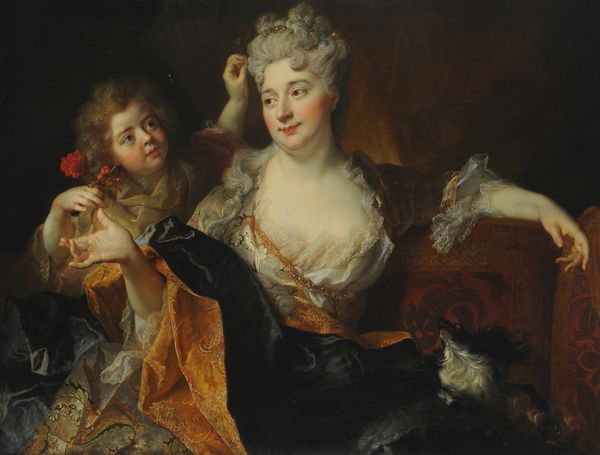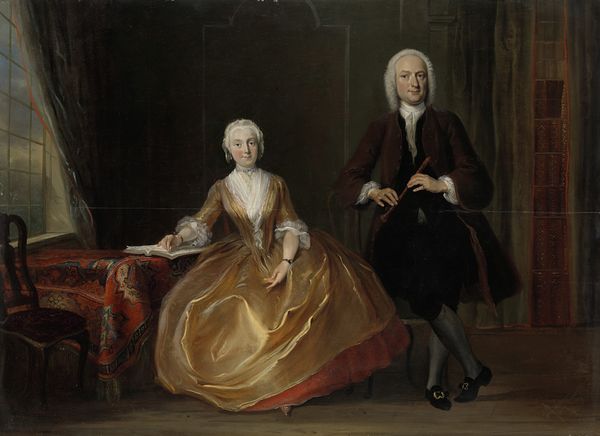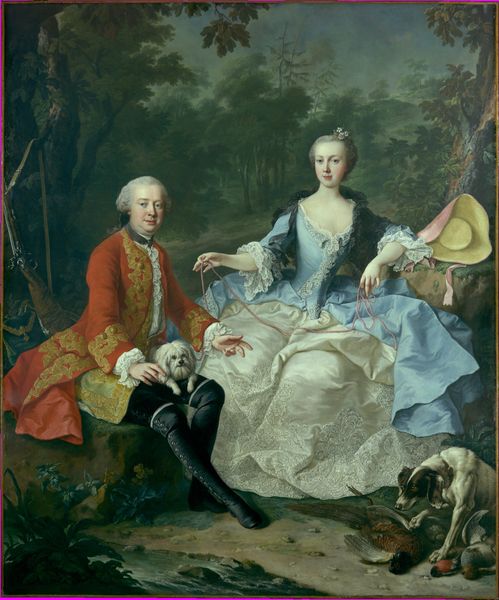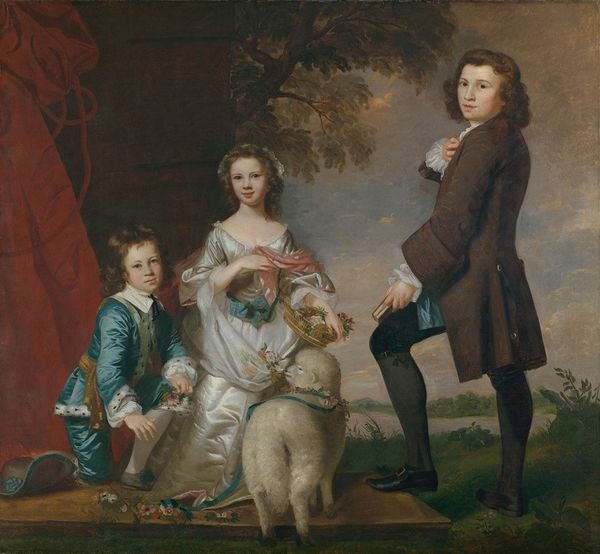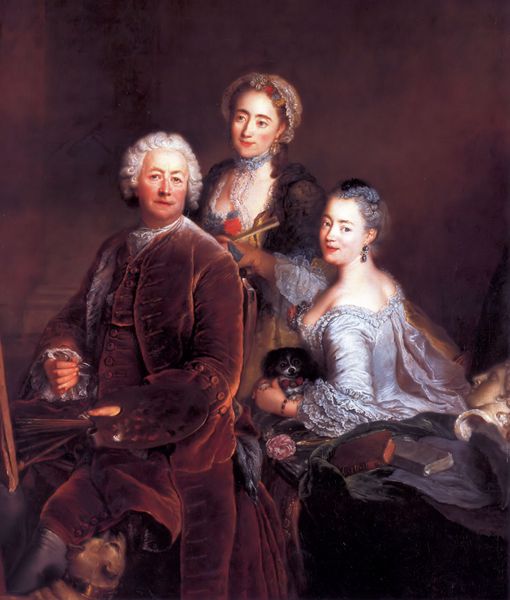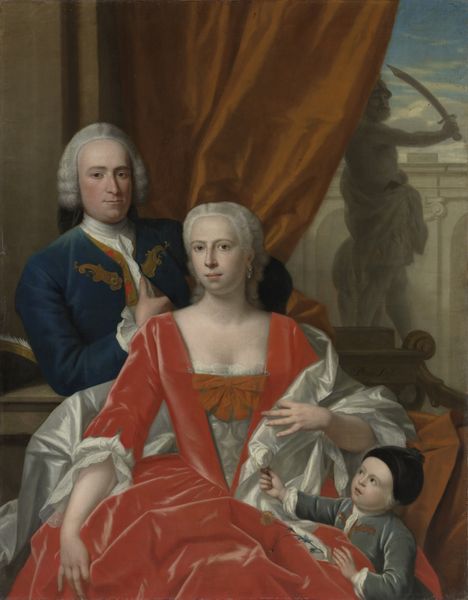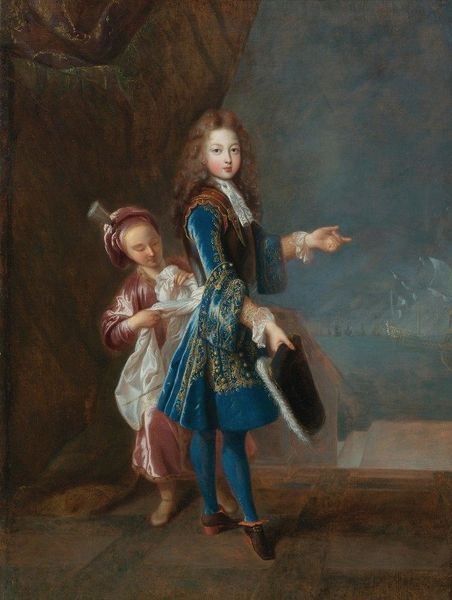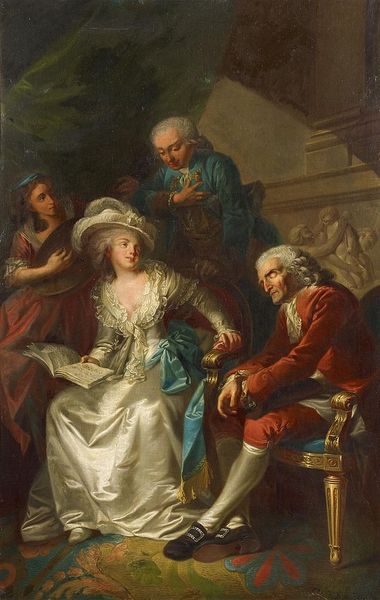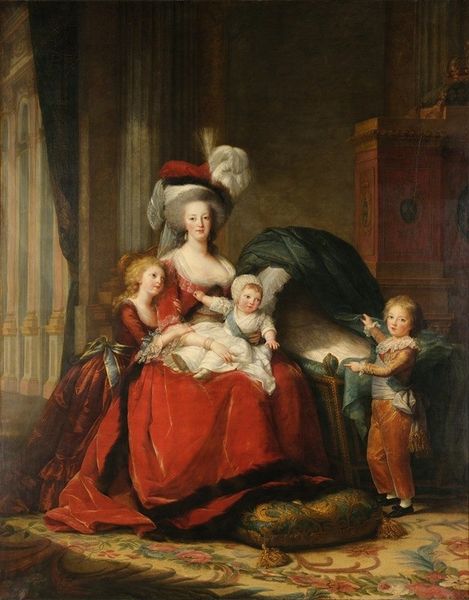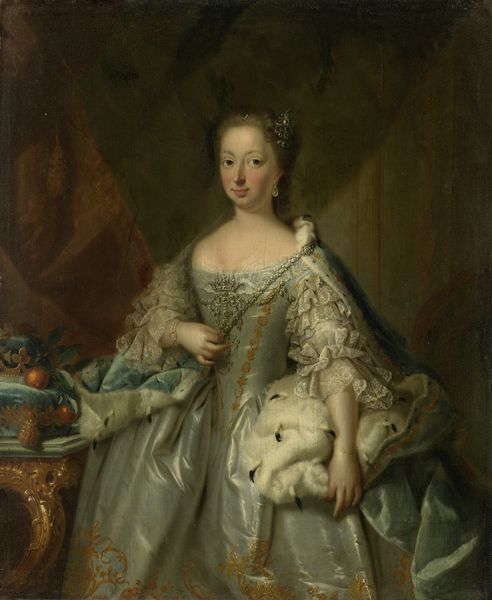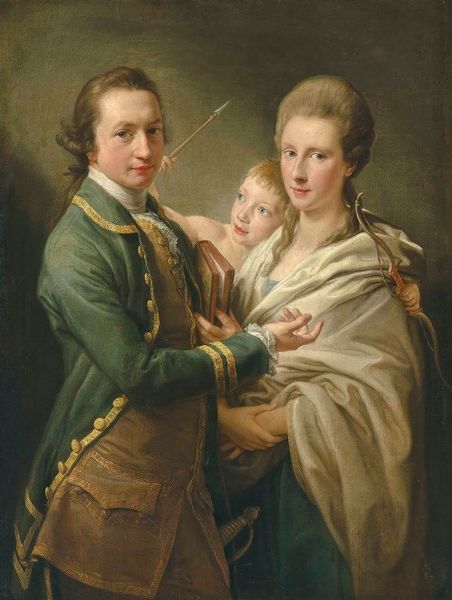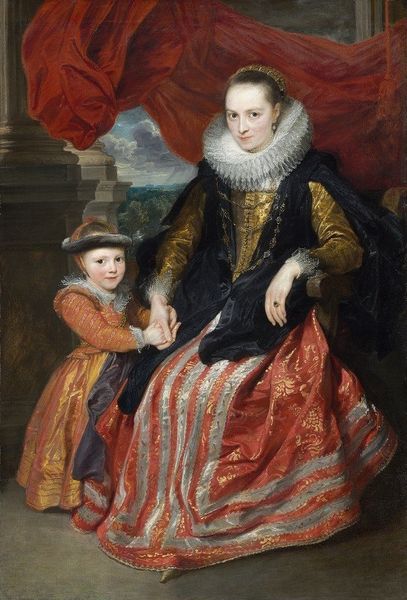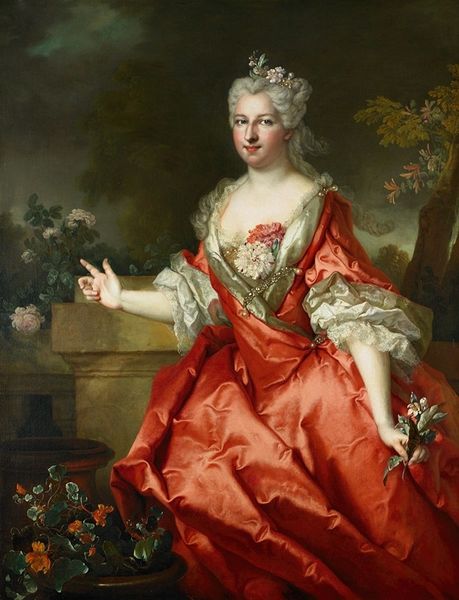
oil-paint
#
portrait
#
figurative
#
baroque
#
oil-paint
#
figuration
#
oil painting
#
romanticism
#
genre-painting
#
portrait art
Copyright: Public Domain: Artvee
Curator: Nicolas de Largillière likely rendered this portrait in the early to mid-1700s; it’s currently known as *Madame Bertin and Her Son, Balthazar Bruno.* De Largillière was, of course, highly sought-after among the Parisian upper classes. Editor: It feels…staged, wouldn’t you say? Yet opulent in its formal declaration, with an element of a Rococo-style family tableau—though more monumental in size and tone. Curator: Indeed, this particular configuration of mother and son carries specific weight. Madame Bertin is not only signaling her own status, but mapping out the social trajectory she envisions for her son. Think of the sphinx in the background. Editor: Ah, that is a nice touch. It's an evocative, mythical symbol promising both enigma and power! The visual rhetoric speaks volumes; the sphinx could even be read as a nod toward intellectual dominance and societal strength, which she is determined to impart to her heir. It’s interesting how those neoclassicizing touches—the sculpture, the architecture—frame them in a more timeless way. Curator: Exactly! Then look at how Madame Bertin gestures outward, almost bestowing her son, and the family lineage, to the world. It reads like a carefully constructed piece of political messaging as much as it is a portrait. Her gown almost merges into his flamboyant red coat; she's literally enveloping him with her influence, making sure that her sphere becomes his own. Editor: What strikes me most is the power dynamic visualized; despite the apparent familial tenderness, there’s something undeniably performative and prescriptive happening here. We’re getting a glimpse of the machinery of aristocratic society. Largillière is giving us not just a portrait, but also a carefully orchestrated power play—mother crafting the future by orchestrating her child's image in her mold. It’s a subtle commentary on inherited privilege and expected social roles. Curator: Agreed. Looking closely, one detects the societal architecture hidden in the garments and gestures. Thank you for making these observations! Editor: Thank you; these dynamics shape, quite literally, the pictures of society!
Comments
No comments
Be the first to comment and join the conversation on the ultimate creative platform.
